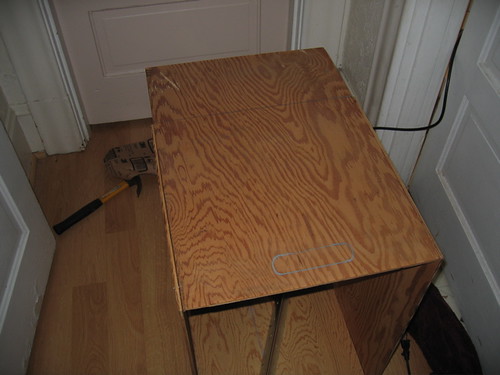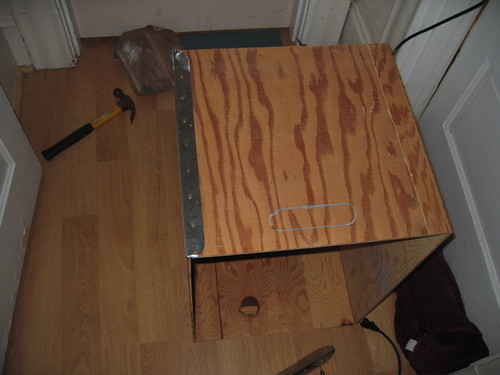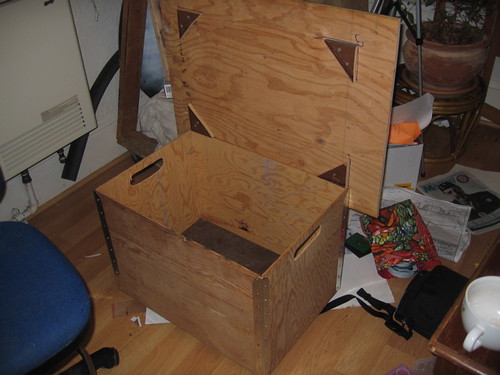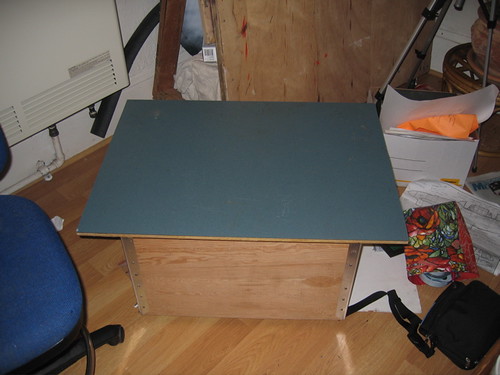I have been looking at AvrMacPack as a recommended platform. They have done a really nice job ob doing everything that I was trying to do and they also have paid attention to a lot of detail that I haven’t.
Please look at this and tell me what you think. I am considering dropping OSX-AVR and focusing on other underserved platform pieces if everyone agrees that it is done as well as I think it is.
http://www.obdev.at/products/avrmacpack/download-de.html
I will be contacting them to see if they can consider bundling nick’s x-code templates or I may put any pieces that are missing as individual packages.
(Archive of http://www.thing-a-day2.com/2008/02/01/day-1-25/)
Today we made 4 things, and broke 2 soldering irons.
Thing 1a closet shelves.

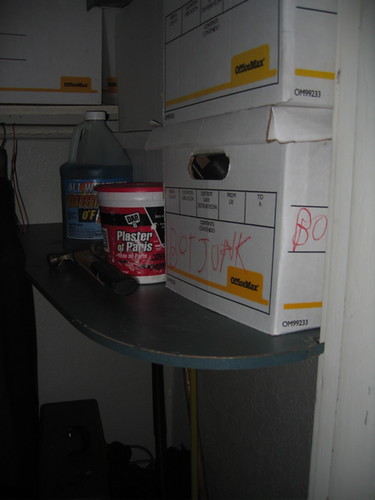
I recently moved out of my storage unit. While putting most of the boxes into my hall closet I realized that there was a ledge which would make it a no brainer to put in a shelve. So I cut down some laminated boards that I dumpster dove last year and rounded the corners off of
them so I wouldnt hurt myself coming and going. I hot glued the edge of the laminate around the corner so It looks good as well 
Thing 1 b and c Meg and A168 mouse (arduino based mouse bots).
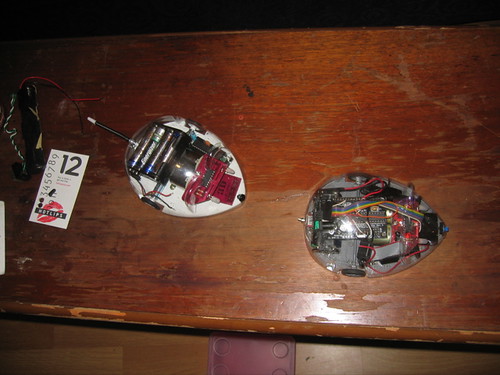
My son and I have been working on modifying a pair of Tamaya wall following mice. After some thought and discussion we decided to build both of them out using the arduino and the motor controller boards that I had built for this purpose previously. My main soldering iron went out in the morning when I was preparing these. My spare went out in the middle of the second motor contoller board. I should move the soldering iron timer up on my to do list.
(Archive of http://www.thing-a-day2.com/2008/01/26/to-do-list/)
For starters I thought i would sit down and see if I had more than 30 things on my to do list that I could do in a day or less. I got stuck fast. Most of the things on my to do list are multiple day projects. So I will list some of the things that are on my bench.
- “Have a Nice Day” (M./F.)Displays
- Rain “Gear” Display
- Hdsp-201x based display
- Creapy Pilot display
- cute little box.
- VFD
- CharleyPlexed leds
- Stackable Boxes
- Arduino Based Projects.
- New Soldering Iron Timer.
- Tiny45 / Tiny 24 emulation pods.
- Reset hack for xbee/arduino board.
- Line follower from bench scratch.
- Fishy Sculpture.
- Buzzbomb populate analog board
- Mega644 port
- a 168 (meg mouses twin for aidan)
- Stepper motor based pen bot.
- Wiring Based Projects.
- SorryBot prototype
- sorrybot board
- Etchy Sketchy.
- Crowswings
- Internal combustion frame.
- ftdi breakout boards
- max7219 breakoutboards
- Flow Charting Unit for Lego Robotics
- Battery Charging Circuit for Bicycle.
For all of my talk of the Arduino being to expensive to deploy I have yet to find its older brother priced anywhere near the $60 that the wiring folks talk about. Until now. I wish this had gone on sale when I was still employed. I bought one anyways.

http://www.maximumrobotics.com/store/p/881-Wiring-I-O-Board.aspx
Until November 30th there are about 20 some odd harmonicas being played prosthetically. There is no intelligence behind them but it looks like most of the the mechanism was custom machined and it is worth seeing because it is well done.
http://www.portlandart.org/newsite/
I was looking at the new arduino and the api and noticing a few things that should have been implemented a long time in the new board. Not the least of which is the reset being hooked up to the fdti chip so that you dont have to intervene to download your code. There are still a few things that I am missing. Not the least of which is the necessity of using a serial boot loader. If the boot loader uses the stk500 then you would be best off with a cheep clone like one of these.
- http://www.serasidis.gr/circuits/avr_isp/avr_isp.htm
- (reference on work computer and not yet on my del.icio.us)
This would pull the expenses off of the board while achieving the same convenience of not needing to reset the board every time you needed to download. I am looking at adding this to my usb serial serial thingy. Its like a 1.25 part. There are a couple of single sided board designs which use the ftdi 232RL chip. I will have some sketches up soon.
…. to be continued …
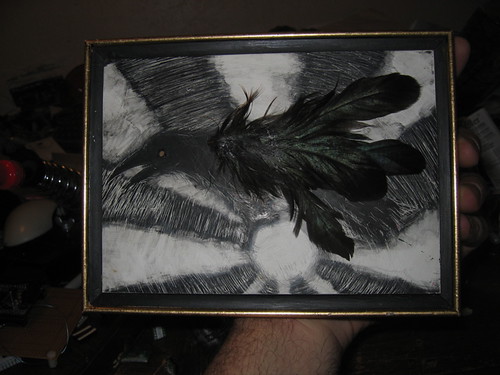 A while ago I started working on a flapping wing mechanism using voice coils taken our of hard drives. To drive them I built a set of boards based on the Atmel tiny45. After getting the basic motion down I wanted to use a light sensor to detect motion so that they would only move when something was around to watch them.
A while ago I started working on a flapping wing mechanism using voice coils taken our of hard drives. To drive them I built a set of boards based on the Atmel tiny45. After getting the basic motion down I wanted to use a light sensor to detect motion so that they would only move when something was around to watch them.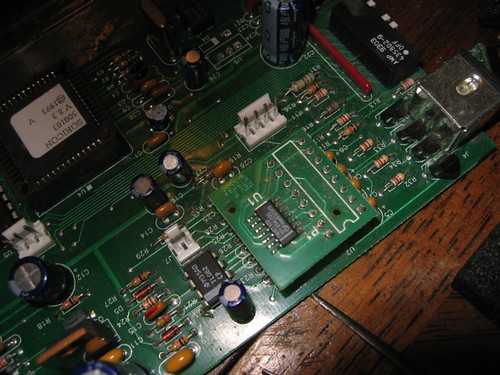
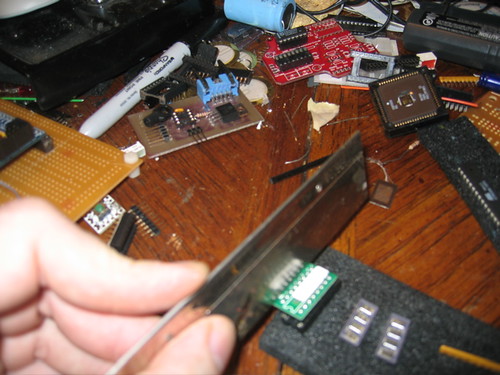
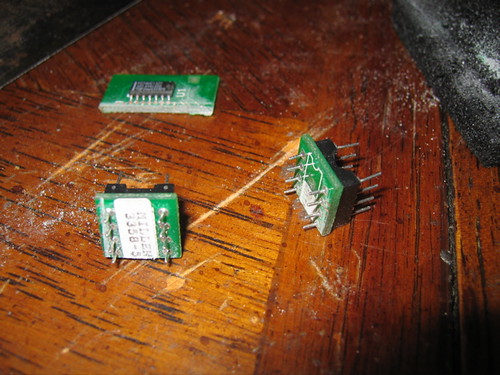
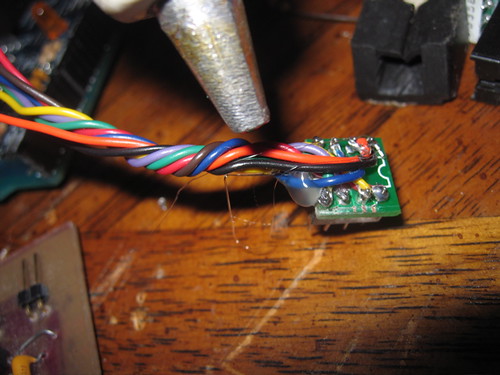
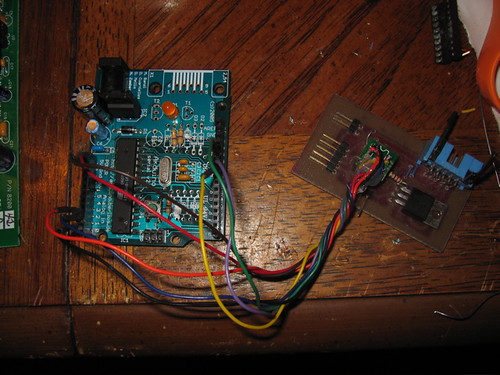

 As preparation for moving out of my storage space I went to IKEA with my g/f and spent 100 that I didn’t really have. I got the idea that I could make them cheaper. I went to the hardware store and got an 8 foot section of drywall corner for $1.50. I originally wanted to do boxes that were “compatible” but realized that I had scrap that allowed me to build the main part of the box with only 2 cuts. (this is important as I only have a scroll saw) I was going to build a second box but the blade wandered and broke so I called it a day.
As preparation for moving out of my storage space I went to IKEA with my g/f and spent 100 that I didn’t really have. I got the idea that I could make them cheaper. I went to the hardware store and got an 8 foot section of drywall corner for $1.50. I originally wanted to do boxes that were “compatible” but realized that I had scrap that allowed me to build the main part of the box with only 2 cuts. (this is important as I only have a scroll saw) I was going to build a second box but the blade wandered and broke so I called it a day.